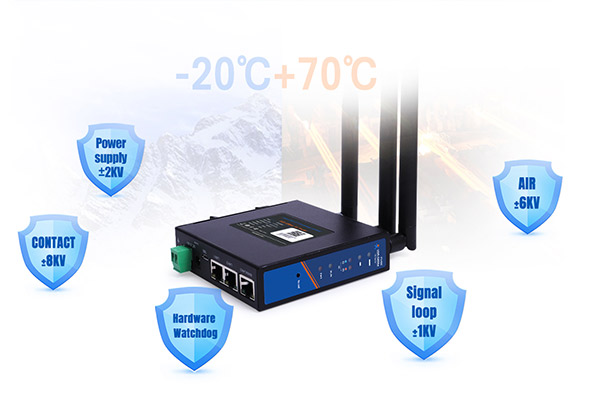In the realm of industrial Internet of Things (IoT), routers play a pivotal role in facilitating secure and reliable data exchange across interconnected devices. When selecting 4g cellular router for various applications, understanding the concept of Ingress Protection (IP) ratings and how they classify the protection levels offered by these devices is crucial. This article aims to simplify the knowledge of IP ratings for 4g cellular router, particularly focusing on the IP30 rating and its corresponding protection level.
Ingress Protection ratings, commonly known as IP ratings, are an international standard used to classify the degree of protection provided by electrical enclosures against solid objects and liquids. These ratings are crucial in industrial settings, where routers and other electronic equipment are often exposed to harsh environmental conditions, dust, and potential ingress of liquids.

The IP rating system consists of two digits. The first digit represents the level of protection against solid objects, such as dust or debris, ranging from 0 (no protection) to 6 (dust tight). The second digit indicates the level of protection against liquids, ranging from 0 (no protection) to 9 (protected against high-pressure water jets).
Now, let's focus on the IP30 rating. The first digit, '3', indicates that the router offers a moderate level of protection against solid objects. Specifically, it is protected against ingress of solid objects with a diameter greater than 2.5mm, such as tools or wires. However, it is not dust-tight and may still allow some fine dust particles to enter.
The second digit, '0', signifies that the router offers no specific protection against liquids. This means that the router is not designed to withstand direct exposure to liquids and should not be used in environments where there is a risk of liquids splashing or leaking onto the device.
Therefore, the IP30 rating corresponds to a protection level that is suitable for indoor environments where dust may be a concern but liquids are not a factor. It's important to note that this level of protection may not be sufficient for industrial applications that involve harsher environments or higher risks of dust and liquid ingress.
When selecting 4g cellular router for specific applications, it's crucial to consider the environmental conditions and potential hazards present in the deployment location. Depending on the requirements, routers with higher IP ratings may be necessary to ensure optimal performance and reliability.
In conclusion, understanding the IP rating system and its application to 4g cellular router is essential for making informed decisions when selecting equipment for industrial IoT applications. The IP30 rating offers a basic level of protection against solid objects but no protection against liquids, making it suitable for certain indoor environments. However, for industrial settings with harsher conditions, routers with higher IP ratings may be required to ensure robust and reliable operation.